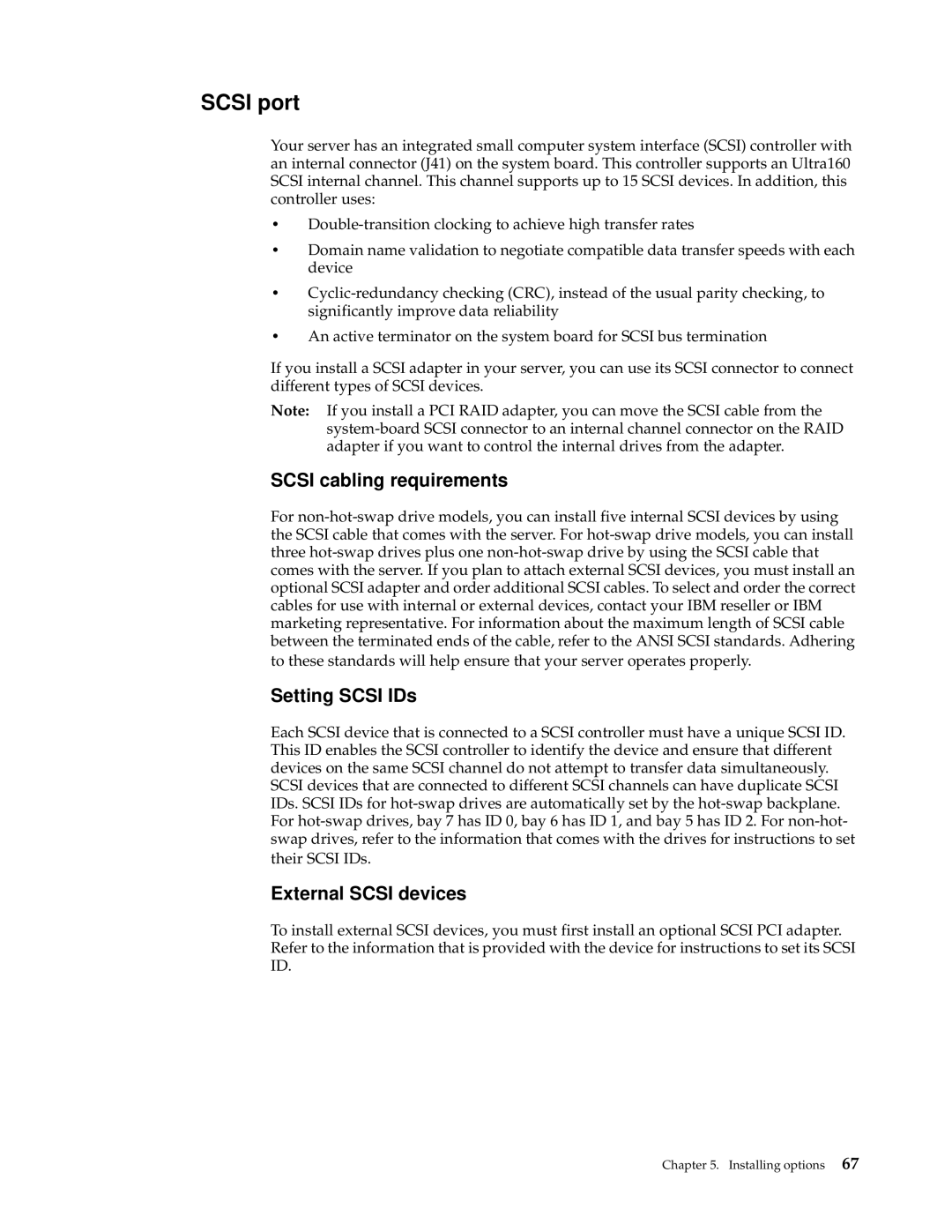SCSI port
Your server has an integrated small computer system interface (SCSI) controller with an internal connector (J41) on the system board. This controller supports an Ultra160 SCSI internal channel. This channel supports up to 15 SCSI devices. In addition, this controller uses:
•Double-transition clocking to achieve high transfer rates
•Domain name validation to negotiate compatible data transfer speeds with each device
•Cyclic-redundancy checking (CRC), instead of the usual parity checking, to significantly improve data reliability
•An active terminator on the system board for SCSI bus termination
If you install a SCSI adapter in your server, you can use its SCSI connector to connect different types of SCSI devices.
Note: If you install a PCI RAID adapter, you can move the SCSI cable from the system-board SCSI connector to an internal channel connector on the RAID adapter if you want to control the internal drives from the adapter.
SCSI cabling requirements
For non-hot-swap drive models, you can install five internal SCSI devices by using the SCSI cable that comes with the server. For hot-swap drive models, you can install three hot-swap drives plus one non-hot-swap drive by using the SCSI cable that comes with the server. If you plan to attach external SCSI devices, you must install an optional SCSI adapter and order additional SCSI cables. To select and order the correct cables for use with internal or external devices, contact your IBM reseller or IBM marketing representative. For information about the maximum length of SCSI cable between the terminated ends of the cable, refer to the ANSI SCSI standards. Adhering to these standards will help ensure that your server operates properly.
Setting SCSI IDs
Each SCSI device that is connected to a SCSI controller must have a unique SCSI ID. This ID enables the SCSI controller to identify the device and ensure that different devices on the same SCSI channel do not attempt to transfer data simultaneously. SCSI devices that are connected to different SCSI channels can have duplicate SCSI IDs. SCSI IDs for hot-swap drives are automatically set by the hot-swap backplane. For hot-swap drives, bay 7 has ID 0, bay 6 has ID 1, and bay 5 has ID 2. For non-hot- swap drives, refer to the information that comes with the drives for instructions to set their SCSI IDs.
External SCSI devices
To install external SCSI devices, you must first install an optional SCSI PCI adapter. Refer to the information that is provided with the device for instructions to set its SCSI ID.
